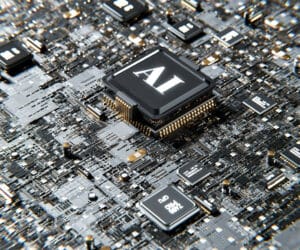This guide demonstrates how a healthcare company developed an internal AI knowledge base using the Dify platform. It covers the end-to-end process of data management, knowledge graph creation, AI model fine-tuning, and practical application. This solution supports smart business transformation by addressing inefficiencies in knowledge sharing and data silos.
Why Do AI Knowledge Bases Matter?
Challenges Faced:
- Data Silos: Dispersed data across multiple systems makes unified management difficult.
- Outdated Knowledge: Traditional knowledge systems cannot keep up with fast-evolving business needs.
- Low Efficiency: Searching for information is slow and frustrating for users.
Objectives:
- Efficient Data Integration: Unify structured and unstructured data for seamless access.
- Smart Knowledge Modelling: Transform data into actionable knowledge using semantic tools.
- Dynamic Interactions: Enable intelligent Q&A and real-time recommendations powered by AI.
How Dify Streamlines Knowledge Base Creation
Dify is a one-stop platform that simplifies creating AI-powered systems with pre-built workflows, custom app tools, and model integrations. Here's how it works:
Step 1: Collecting and Preparing Data
Dify supports importing various data types and cleaning them with automated workflows.
| Data Type | Examples | Processing Method |
|---|---|---|
| Structured | SQL Databases, ERP Systems | ETL tools, database connectors |
| Semi-structured | JSON, XML Files | Field mapping, standardisation |
| Unstructured | PDFs, Word Docs, Web Data | OCR, entity recognition |
Key Techniques:
- ETL (Extract-Transform-Load):
- Streamlines data extraction, conversion, and loading into the knowledge hub.
- Dify's ETL module automates these tasks.
- OCR and Semantic Analysis:
- Extracts information from scanned documents for better structuring.
Step 2: Creating a Knowledge Graph
Processed data is converted into meaningful relationships using AI models and graph databases.
| Task | Technique | Tools |
|---|---|---|
| Entity Recognition | Named Entity Recognition (NER) | Hugging Face Models |
| Relationship Mapping | Syntax and Dependency Parsing | SpaCy, BERT |
| Knowledge Storage | RDF/OWL Representation | Neo4j, GraphDB |
Workflow Highlights:
- Automated Entity Mapping: Leverages pre-trained AI models for seamless identification of key concepts.
- Graph Storage: Uses Neo4j to store interconnected knowledge for fast retrieval.
Step 3: Integrating Knowledge with AI Models
Dify connects knowledge graphs to large language models (LLMs) for interactive applications.
Implementation:
- API Integration: Use RESTful or gRPC APIs to link models and knowledge graphs.
- Fine-Tuning Models: Optimise LLMs like LLaMA 3.2 or Qwen for domain-specific use cases.
- Enhanced Q&A: Combine search with generative AI for precise and dynamic responses.
Implementing Dify AI in a Medical Company
1. Knowledge Sharing System
- Need: Share knowledge across the organisation efficiently.
- Solution:
- Collect internal technical documents and client case studies.
- Build a graph database with searchable relationships.
- Implement real-time Q&A using AI models.
2. Personalised Recommendation Engine
- Need: Recommend resources based on user behaviour.
- Solution:
- Gather behaviour data from CRM logs.
- Analyse preferences using semantic AI.
- Generate recommendations based on the knowledge graph.
Performance Optimisations
Model Optimisation:
- Quantization: Reduce computation with ONNX Runtime (e.g., FP16, INT8).
- Distillation: Use smaller models to mimic larger ones for efficiency.
Query and Data Optimisation:
- Indexing: Speed up graph queries by indexing key nodes and relations.
- Caching: Improve repeat query performance with Redis.
Results
By implementing Dify’s AI-powered solution, the company achieved:
- 40% Faster Data Integration: Automated workflows reduce manual processing time.
- 3x Faster Knowledge Queries: From 5 seconds to 1.5 seconds per query.
- Improved Q&A Accuracy: From 70% to over 90%.
| Metric | Before | After | Improvement |
|---|---|---|---|
| Data Processing Time | 20 hours | 12 hours | 40% faster |
| Query Speed | 5 seconds | 1.5 seconds | 3x faster |
| Q&A Accuracy | 70% | 90% | 20% better |
Final Thoughts
The Dify platform is a powerful tool for transforming enterprise knowledge management. Its capabilities in workflow automation, knowledge graph integration, and AI enhancement enable businesses to make smarter decisions and improve efficiency. Whether for Q&A systems or personalised recommendations, Dify provides a solid foundation for digital transformation.
At ZedIoT, we help businesses build AI-powered knowledge bases using Dify AI, LLM optimization, and automated knowledge management tools. Our expertise in AI-driven enterprise solutions enables companies to streamline information access, enhance decision-making, and optimize operational efficiency.
🔹 Looking to integrate an AI knowledge base into your business? Contact ZedIoT today to explore how we can help.



